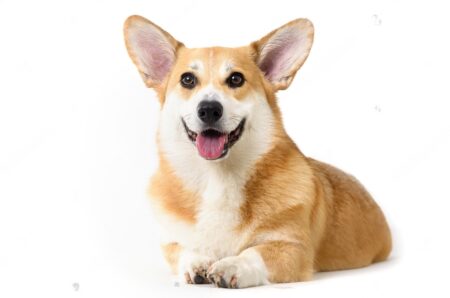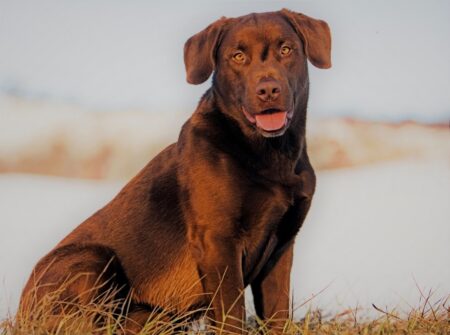How to Get Your Dog Started in Flyball: Step-by-Step
Flyball is a fun and exciting dog sport that involves teams of dogs racing against each other through a series of hurdles to retrieve a ball. It is a fast-paced and high-energy activity that not only provides physical exercise but also strengthens the bond between you and your canine companion.
If you are interested in getting your dog started in flyball, there are a few important steps to follow to ensure a successful and enjoyable experience for both you and your dog. In this article, we will discuss how to get your dog started in flyball, including training, equipment, and tips for success.
How to Get Your Dog Started in Flyball: Step-by-Step
Step 1: Assess Your Dog’s Suitability for Flyball
Before diving into flyball, it is important to assess if your dog is suitable for the sport. Flyball is a physically demanding activity, so your dog should be in good physical shape and have a strong desire to retrieve and chase after balls. It is also important for your dog to have basic obedience skills and be well-socialized with other dogs.
Additionally, some breeds may be better suited for flyball than others. Border Collies, Australian Shepherds, and Jack Russell Terriers are some of the commonly seen breeds in flyball, but any breed or mix can participate as long as they are physically and mentally capable.
Step 2: Train Basic Obedience Skills
As mentioned, basic obedience skills are essential for a successful flyball career. Your dog should be able to follow commands, have a solid recall, and be well-mannered around other dogs. If your dog needs some extra help in this area, consider enrolling in a basic obedience class before starting flyball training.
Step 3: Acquire the Necessary Equipment
To get started in flyball, you will need some basic equipment, including:
- A Flyball Box – This is the main piece of equipment used in flyball. It is a spring-loaded box that launches the ball for your dog to retrieve.
- Hurdles – These are a series of four hurdles that your dog must jump over in order to reach the flyball box.
- Ball – You will need a tennis ball or a similar type of ball for your dog to retrieve.
- Harness and Leash – A well-fitting harness and leash are important for keeping your dog safe and under control during training and competition.
SEE ALSO: Rabies in Cats: Signs To Look For
Step 4: Find a Flyball Club or Class
Flyball is often done in a team setting, so it is important to find a local flyball club or class to join. Not only will this provide the opportunity to train and compete with other dogs, but it will also allow you to learn from experienced handlers and build a supportive community.
Step 5: Start Training
Once you have all the necessary equipment and have joined a club or class, it’s time to start training! It is important to start slow and gradually build up your dog’s abilities. Begin by teaching your dog to retrieve a ball, then move on to jumping over small hurdles, and eventually introduce the flyball box.
Be sure to use positive reinforcement techniques like treats and praise to encourage your dog and make training a fun experience. It is also important to take breaks and not push your dog too hard to prevent burnout or injury.
What is Flyball
Flyball is a competitive dog sport that involves a relay race between two teams of dogs. The race consists of a team of four dogs racing against another team of four dogs over a line of hurdles to a box. Once the first dog jumps over the hurdles and reaches the box, they must trigger a spring-loaded pad to release a tennis ball. The dog then catches the ball and races back over the hurdles to the start/finish line, where the next dog in the team takes off. The first team to have all four dogs complete the course without any errors wins the race. Flyball is a fast-paced and exciting sport that requires teamwork, speed, and agility from both the dogs and their handlers. It is also a popular spectator sport, with teams competing at local, national, and international levels.
What Are the Different Types of Flyball?
- Traditional Flyball: This is the most common type of flyball and is played by four dogs per team. The dogs must complete a course of four hurdles and retrieve a tennis ball from a spring-loaded box before returning to their handler.
- Multibreed Flyball: This type of flyball allows for teams to have a mix of breeds and sizes of dogs, as long as they can complete the course. This promotes inclusivity and diversity in the sport.
- Regular Division: This division follows the standard rules of flyball and is open to all teams of four dogs.
- Open Division: In this division, teams can have any number of dogs, as long as they can complete the course and pass the ball back to their handler.
- Singles Division: This division is for dogs that prefer to run the course alone. It is also open to senior or injured dogs who can no longer compete in the traditional four-dog teams.
- Fun Division: This type of flyball is more relaxed and is often used for training and trying out new dogs. It may also involve fun games and challenges to keep the dogs engaged.
- Veterans Division: This division is specifically for senior dogs (typically over 7 years old) who are no longer able to compete at a high level but still enjoy the sport.
- Doubles: In this type of flyball, two dogs from one team run alongside two dogs from another team. The first team to have all four dogs complete the course wins.
- Team Relay: This is a team event where each team has four dogs and must complete the course in the fastest time possible. One team member starts the course and the next team member begins once the first dog has passed the finish line.
- Tournaments: These events bring together teams from different clubs or regions to compete against each other. These tournaments may follow different rules and formats, but the ultimate goal is to win and earn points for the team.
Best Dogs for Flyball
- Border Collie
- Belgian Malinois
- Whippet
- Jack Russell Terrier
- Australian Cattle Dog
- Shetland Sheepdog
- Papillon
- Pit Bull Terrier
- Staffordshire Bull Terrier
- Standard Poodle
Where to Train Your Dog for Flyball
While there are many reputable trainers and facilities that offer flyball training, some top choices for places to train your dog for flyball include:
- The Flyball Academy: Located in Ohio, The Flyball Academy offers comprehensive flyball training for all skill levels, from beginners to experienced teams. They have a large indoor facility with state-of-the-art equipment and experienced trainers who specialize in teaching the skills needed for this sport.
- Canine Sports Academy: Based in Illinois, the Canine Sports Academy offers flyball classes that cover all aspects of the sport, including handling, jumps, and box turns. They have a fully equipped indoor flyball arena and experienced trainers who have competed in national and international flyball competitions.
- North American Flyball Association: The North American Flyball Association (NAFA) offers a list of sanctioned clubs and trainers throughout the US and Canada. These clubs and trainers have been approved by NAFA and are known to provide quality flyball training and events.
- Local Flyball Clubs: Many areas have local flyball clubs that offer training and events for members. These clubs often have experienced trainers and provide a fun and supportive environment for both beginners and experienced teams.
SEE ALSO: How Big Do Teacup Maltipoos Get?
FAQs
Q. How old do dogs have to be to do flyball?
A. Dogs should be at least 1 year old and fully matured before starting flyball training. This is to ensure they are physically and mentally capable of performing the high-intensity activity.
Q. Do Some Dog Breeds Do Better in Flyball?
A. Yes, certain dog breeds may be better suited for flyball due to their physical abilities and trainability. Breeds that are known for their speed, agility, and high energy levels, such as border collies, Australian shepherds, and Jack Russell terriers, tend to excel in flyball. These breeds also typically have a strong desire to please their owners, making it easier to train and participate in the fast-paced and high-energy sport of flyball. However, with proper training and determination, any breed of dog can potentially do well in flyball.
Q. How High Are the Hurdles in Flyball?
A. The height of the hurdles used in flyball competitions varies depending on the organization and division. In general, the hurdles are set at a height of 8 inches for the smallest dogs and 14 inches for the largest dogs.
Conclusion
Flyball is a fun and exciting sport for dogs that requires speed, agility, and teamwork. Getting your dog started in flyball may seem overwhelming, but with the right training, your dog can excel in this sport. Remember to start slow and focus on building a strong foundation of skills before progressing to more advanced techniques. Be patient and consistent with training, and always prioritize your dog’s safety and well-being. With dedication and practice, your dog can become a successful and happy flyball competitor. Have fun and enjoy the journey with your furry friend!

